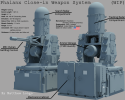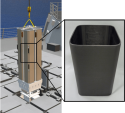The Littoral Combat Ship program is poised to make big strides this year in its strike capability, both with over-the-horizon missiles and the shorter-range Longbow Hellfire missile.
The Independence-variant USS
Coronado (LCS-4) will deploy later this year with the
, and engineering is underway to outfit USS
Freedom (LCS-1) with the
.
Program Executive Officer for Littoral Combat Ships Rear Adm. Brian Antonio told USNI News in a May 2 interview that the Harpoon system will be installed on
Coronado within the next month, in time for an over-the-horizon missile demonstration at the Rim of the Pacific (RIMPAC) 2016 exercise in Hawaii this summer.
“It’s the beginning of how to incorporate OTH on LCSs,” he said.
The NSM effort is a bit farther behind, with the engineering not yet complete, but the missile system integration will be done in time for
Freedom’s next deployment.
Antonio said the OTH missile effort falls into four categories: demonstrating the capability on
Coronado and
Freedom in the near term to “show that LCS is capable of having a long stick;” building a missile system into new LCSs; backfitting the systems into existing LCSs; and designing a missile into the frigate design.
The program office is looking at the last couple LCSs ahead of the transition to the frigate – the planned Fiscal Year 2017 ships – and investigating “are we able to capture with our FY 17 ships, actually starting it right from scratch and getting the shipbuilders to incorporate the right systems to be able to support OTH?” Building the systems into the frigate design will be somewhat easier, since there will be more freedom to install the system where it makes the most sense instead of where the LCS design allows for a missile launcher.
As for the backfit effort, once the PEO decides on which missile to use going forward, the program will look for opportunities during ships’ midlife availabilities, shorter maintenance availabilities and even post-delivery availabilities to insert the OTH missile system. The engineering being done on
Freedom today will help inform the backfit effort, Antonio said.
Director of Surface Warfare Rear Adm. Pete Fanta previously told USNI News that this year’s OTH missile installation efforts
with the ship’s combat system, whereas
featured a less connected set-up.
In addition to the OTH strike capability, the Navy is also adding a short-range missile to the LCS surface warfare mission package to help address the fast inshore attack craft threat.
“Later this year we’ll also do some surface-to-surface missile shots of the Longbow Hellfire missile – I think it’s four more this year off of a guided test vehicle,” Antonio said in the interview. The
– altered to fire vertically from the ship instead of horizontally from a helicopter – last year and will continue testing the missile from test platforms rather than from an LCS in the short term.




